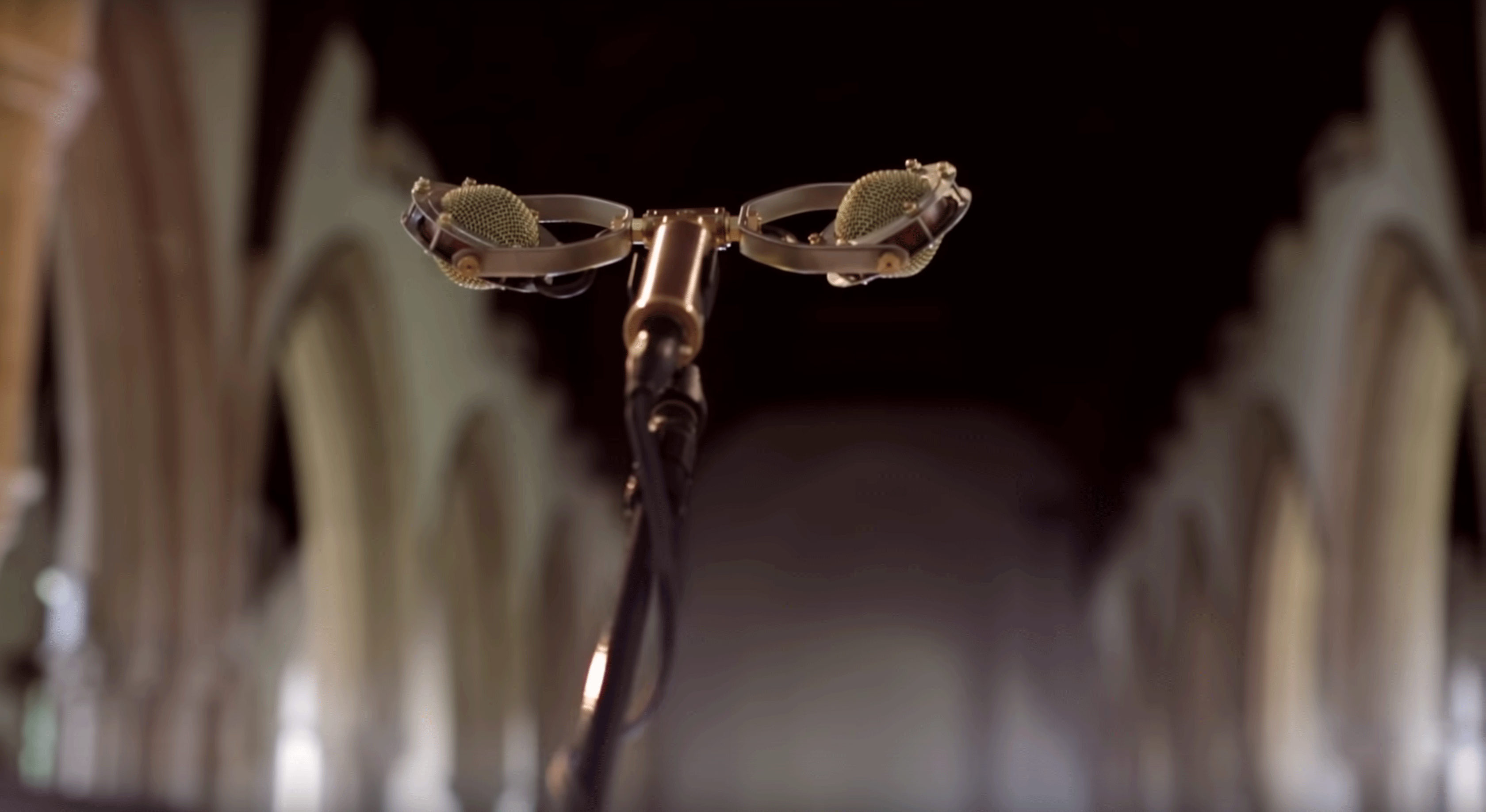Multi-Miking a Live Choral Performance
There are few greater pleasures for an audio engineer than recording a choir in an old stone building. With so much space — both physically and in the audio realm — these kinds of surroundings are a recording enthusiast’s dream, as they offer so many options for getting creative during the recording process.
We teamed up with London Contemporary Voices to record their rendition of Fleet Foxes’ 'White Winter Hymnal’, using a Focusrite Scarlett 18i20 and an OctoPre MkII Dynamic, connected to Pro Tools running on a laptop. The venue was an old church, close to Focusrite’s HQ in Buckinghamshire, UK.
With the song’s haunting melodies, the choir’s dense vocal harmonies, and the centuries-old space designed to give choral music a godly ambience, the stage was set for a stunning recording. The engineers’ first objective was to get the choir centered in the space, so they could use the symmetry of the church to position their microphones.
Next was to listen to the room as the choir warmed up, to identify the sweet spots in the venue. Though there are some established mic techniques that will provide surefire results (such as X-Y pairs, spaced stereo pairs, Decca Trees and ORTF arrays), each venue will have interesting-sounding pockets where the combination of sonic reflections produce a pleasurable result. After using their ears to discover these sweet spots, the engineers set up a total of 11 mics around the space (including the bizarre-looking Ear Trumpet Labs Evelyn stereo large diaphragm condenser mic), to provide options in the mix and to help fill the stereo field with an accurate representation of the performance.

The Ear Trumpet Labs Evelyn stereo microphone has two closely matched large-diaphragm condenser capsules arranged in an ORFT arrangement. It’s ideal for miking live performances in large spaces where the room acoustics contribute a lot to the overall sound.
While most attention was given to creating stereo pairs, a mono centre mic, an Ear Trumpet Labs Chantelle, which is visible in many shots throughout the video, was also used. The mic was positioned low to the stone floor, in close proximity to a section covered by a rug, and offset to stage-left to allow the female soprano and alto voices to have proximity dominance over the male tenors and baritones. This is an engineering trick that dates back as long as recording has existed; a crude mono balance can be achieved by placing quieter instruments and voices closest to the mic. Positioning mics in proximity to less-reverberant surfaces — like the rug in this instance —can help to gain a more focussed result.
To record the session, the team used a Focusrite Scarlett 18i20, connected via USB to a laptop running Pro Tools. In addition, a Focusrite OctoPre MkII Dynamic was used to provide extra mic preamps with per-channel compression. The OctoPre MkII Dynamic was connected to the Scarlett 18i20 via a single ADAT optical cable, with the OctoPre configured as the master clock and the Scarlett 18i20 syncing to the OctoPre’s clock signal transmitted over the ADAT connection.
The session was recorded at 24-bit/96kHz, to ensure the highest possible quality. One consideration that the engineers had to consider is the bandwidth of digital audio over ADAT optical cables. At ‘normal’ sample rates, such as 44.1kHz or 48kHz, a total of eight mono channels can be transmitted via each ADAT link. At higher rates like 88.2kHz and 96kHz, more bandwidth is needed to transmit the data. At 96kHz, only four channels of ADAT audio can be transmitted down each optical cable, and with the Scarlett 18i20 only having one ADAT input, the decision was made to sacrifice four channels of input audio, and opt for the higher sample rate. With a total input count of 11 mono channels, this decision had no affect on miking decisions made by the engineers on the day.

Engineers were able to audition different mixes of the live mics during the recording session, using the MixControl software that comes free with the Focusrite Scarlett 18i20.
The Scarlett 18i20 has a powerful DSP mixer on board, which is configured using the Scarlett MixControl software. As the choir was performing live with no backing track, there was no need for foldback mixes to be arranged for the performers. However, the Focusrite recording team were able to audition the balance of the mics, by creating custom mixes in Scarlett MixControl, without affecting the signal going to the DAW. This ability to make a general mix — and even try out alternative mixes during the session — without having any affect on the recorded signal, allowed the team to make creative decisions that, under other circumstances, would have needed a full listen-back in controlled conditions. For engineers, this is a time-saver and the efficiency it affords helps to keep the session running smoothly. For performers, it keeps the creative energy focussed, which is important on live sessions such as this.
Though MixControl was used to audition the input signals during the recording, the Focusrite recording team were also able to get an idea of how the finished recording was going to sound, once they’d applied plugin audio processors. Using the Focusrite plugin suite, the engineers were able to apply compression, EQ and other effects to the mix in the usual way — by inserting plugins on input channels in the DAW and monitoring the mix coming out of the DAW. Again, because no audio was going out to the performers, this was doable in real time.
All in all, the London Contemporary Voices session demonstrated that, with a modest selection of equipment, excellent-quality results can be achieved. And on such a blank-canvas session with with so many options for miking and creative recording, the Focusrite Scarlett 18i20 has everything needed to be able to capture plenty of live sources, make custom mixes on the fly, and come away with a pro-sounding recording.
